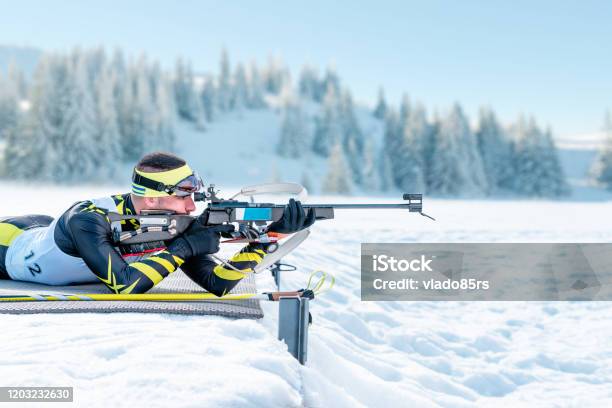Unraveling the Intricacies of Biathlon: A Test of Stamina and Precision
The sun fades below the horizon, leaving only the bright beams of floodlights illuminating the snowy landscape. A lone figure glides across the icy terrain, the crunch of skis against fresh powder echoing through the crisp winter air. Each breath is measured, each stride is calculated—too fast and the athlete risks exhausting themselves before the finish line; too slow and they fall behind the competition. Suddenly, the skier stops, unslings a rifle from their back, and with a steady hand and focused eye, fires at a distant target. This is not just a winter sport. It's a biathlon, a unique blend of endurance and precision that tests the limits of human performance.

The Birth and Expansion of Biathlon
The biathlon, a hybrid of cross-country skiing and rifle shooting, has its roots in the survival skills of ancient Scandinavian hunters. The earliest recorded biathlon-type event was the ‘military patrol’ competition held at the 1924 Winter Olympics. However, it wasn’t until the 1960 Winter Olympics in Squaw Valley, California, that biathlon was officially included as an Olympic sport. Since then, it has evolved in terms of technology, training methods, and competition structure, becoming a fan favorite in the Winter Olympic Games.
Biathlon Today: A Fusion of Strength and Precision
Modern biathlon combines two contrasting disciplines: cross-country skiing, an aerobic activity requiring stamina and strength, and rifle shooting, a controlled, precise task demanding mental focus and a steady hand. The challenge lies in the transition between high-intensity skiing and precision-based shooting, with the athletes’ heart rate often exceeding 180 beats per minute. This unique combination of physical exertion and mental concentration makes biathlon one of the most demanding sports in the world.
Training for the Biathlon: A Comprehensive Approach
Training for the biathlon demands a comprehensive approach, incorporating endurance training, strength conditioning, shooting practice, and mental preparation. Athletes must develop their aerobic fitness for skiing, their shooting skills for the range, and their ability to transition smoothly between the two. This multifaceted training regimen, combined with the unpredictable nature of outdoor conditions, makes every biathlon race a unique challenge.
The Future of Biathlon: Innovations and Predictions
The future of biathlon is set to be shaped by advancements in equipment technology, training methodologies, and competition formats. The use of virtual reality for shooting practice, the development of more efficient ski designs, and the introduction of new race formats are some of the trends that are expected to influence the sport in the future. As biathlon continues to evolve, athletes and coaches will need to adapt and innovate to stay ahead of the competition.
In conclusion, the biathlon is a fascinating sport that combines physical endurance and mental focus in a unique and challenging way. Its rich history, intense training regimen, and exciting potential for future development make it a captivating subject for both athletes and sports enthusiasts. Whether you’re an aspiring biathlete or a passionate sports fan, delving into the intricacies of biathlon offers valuable insights into the extraordinary capabilities of human performance.






